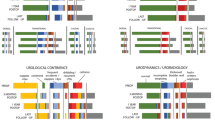Abstract
We retrospectively reviewed 32 patients operated on for lipoma of the conus and lipomyeloschisis, the two main anatomical subtypes of congenital lumbosacral lipomas associated with tethered cord syndrome. Surgery was proposed to patients when they were symptomatic, and in most cases for progressive symptoms. The evolution of the different symptoms was studied separately. In most patients, symptoms improved or stabilized after surgery; in some, however, postoperative worsening, at least of some of the symptoms, was seen. This postoperative worsening became apparent either early or late after the operation, and was not associated with surgical trauma or postoperative complications. We suggest it was caused mainly by the natural course of the disease (especially in the case of the orthopedic deformities), and in some cases by retethering. Our series is not large enough to detect statistical significance for the different symptoms or for the anatomical subgroups. Importantly, according to our analysis by the different symptoms, the operation did not seem to protect the patients from later development of new deficits. This can be interpreted as an argument against prophylactic surgery in asymptomatic patients.
Similar content being viewed by others
Author information
Authors and Affiliations
Additional information
Received: 11 August 1998
Rights and permissions
About this article
Cite this article
Van Calenbergh, F., Vanvolsem, S., Verpoorten, C. et al. Results after surgery for lumbosacral lipoma: the significance of early and late worsening. Child's Nerv Syst 15, 439–442 (1999). https://doi.org/10.1007/s003810050433
Issue Date:
DOI: https://doi.org/10.1007/s003810050433




